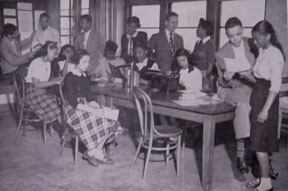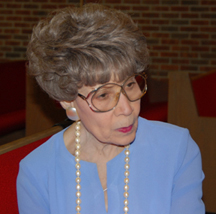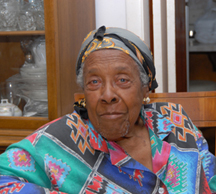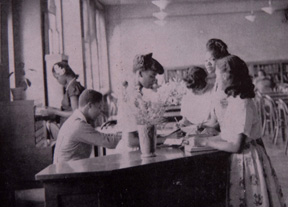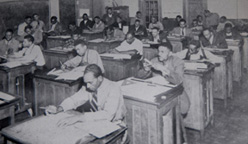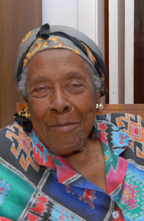

Curricular Experimentation at Pearl High School
|
|||||||||||||||||||||||||||||
Guided by the principal of Pearl High School, J. A. Galloway, and precipitated by the Bachman Report, a highly critical analysis of education in Nashville from the 1930s, Pearl teachers had already been engaged in a careful examination of teaching practices before their entry into the Secondary School Study. (1) Participation in the General Education Board’s project only furthered their resolve “to ascertain necessary suggestive changes in school curriculum.” At other schools, such critique could easily have been viewed as threatening; however, Principal Galloway, who was often described as a father figure, set a tone of civility and fairness and brought a degree of thoughtfulness to the teachers’ self examination and programmatic experimentation. Callisto F. Bell, who began teaching at Pearl High School in 1940, states: |
|||||||||||||||||||||||||||||
|
|||||||||||||||||||||||||||||
“Mr. Galloway was a unifier and a worker behind the scenes. He was not one to take center stage, but he unified the faculty into an unbelievable force. With his ability to be able to choose the teachers that he wanted in certain areas, he was able to select the best.” |
|||||||||||||||||||||||||||||
During the Secondary School Study, Pearl teachers were adapting their instructional methods in order to become more conscious of “pupil needs, individual teacher weaknesses, pupil growth, and professional cooperation.” (2) To guide their experimental work, teachers developed a needs-based curriculum seeking to establish a sympathetic environment for pupils and teachers to work together and to develop a sense of democracy and citizenship. “The Pearl High teachers were astute in their assessment of needed improvements. Black students were in need of both physical and emotional strength to progress through the American social system. These educators sought to intellectually stimulate their pupils by increasing the types of educational experiences offered.” (3) |
|||||||||||||||||||||||||||||
“Time was set aside for the core program. In order to learn history, you must have a good understanding of English. Students and teachers started the day in home rooms—the rooms where we lived. Before lunch, I would focus on a class theme, for example ‘going my way.’ We taught whatever we thought was good for the students. I attended workshops where we would develop our own materials; we could not rely upon our [second-hand] books.” |
|
||||||||||||||||||||||||||||
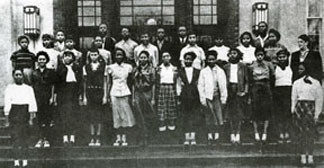 During Pearl High School’s participation in the Secondary School Study, teachers stressed four broad areas of student needs serving to unify the academic and vocational subjects: oral and written composition, health, safety, and citizenship. |
|||||||||||||||||||||||||||||
An excerpt from a 1942 visitor’s report describing activities at Pearl High School: |
|||||||||||||||||||||||||||||
A “correlated” core curriculum took many forms at the Pearl School during the General Education Board study and connected what could otherwise have been separated tracks of the academic and vocational courses of study. (6) Lillian Thomas, a Pearl High School home economics teacher during the 1940s and 1950s, described one typical correlated core curriculum project where course activities were coupled to the content in Miss Bass’s English class. Specifically, the two teachers coordinated the subject matter so that when the English class studied Shakespeare’s As You Like It, Thomas’ home economic class would study period related floral arrangements. Another example stemmed from the work of Secondary School Study staff member Hilda Taba who coordinated the efforts of English and history teachers to develop resource units on civil rights. As the United States entered WWII, most academic and vocational teachers at Pearl used students’ interests in the war effort as a general theme to correlate activities among courses. |
|||||||||||||||||||||||||||||
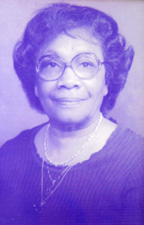 Lillian Thomas |
|||||||||||||||||||||||||||||
“Pearl High School illustrated numerous methods of school and community cooperation. Because of World War II, service to the community war effort involved the school in planning discussions on the war, joining community parades, and providing help in rationing operations. Programs in health improvement, safety, culture, and influence and results of war on home and school life were instituted as a result of the need-based approach to Pearl High School’s curriculum development. An important aspect of the school’s participation in the Study was the evidence of change in faculty teaching procedures and also their total professional growth.” (7) |
|||||||||||||||||||||||||||||
|
|||||||||||||||||||||||||||||
Attempting to ascertain the implementation of “progressive education ideology” from the 1940s from the 2007 descriptions of teachers is difficult if not somewhat impossible. Accounts do not necessarily incorporate the standard terms used today to identify progressive practices. This was not due to unfamiliarity, however, since some of the teachers interviewed for this exhibition had enrolled at the bastion of progressive education, Teachers College, Columbia University. Rather than using the term progressive education, one term continued to arise in conversation, “creative” education and the “creativity” of the teachers. At the time of the Secondary School Study, black teachers were being dismissed in the American South for their membership in the NAACP and, during the 1950s, all teachers and schools were being redbaited for any allegiance to John Dewey and progressive education. As noted by Alice Epperson who was present at all of the 2007 interviews as well as who attended Pearl High School in the late 1950s and early 1960s, teachers referred to their practices not within the vernacular of progressive education but, instead, as being creative, somewhat as an unacknowledged code. |
|||||||||||||||||||||||||||||
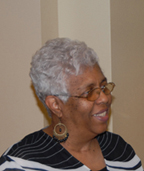 |
“The teachers always said that we (as a group) would have to work longer and that we would have to be more creative to be seen and to be heard. They would say that we have to put this old textbook aside and be creative. This was their way to get around the standardized curriculum; they were bringing in their own materials and using their resource units. They never talked about progressive education; that spirit at Pearl High School was one that was called creative.” |
||||||||||||||||||||||||||||
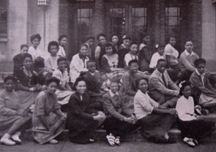 The historical mission of black education at the secondary school level is often described as the tension between a college preparatory course of study and a more occupational-vocational curriculum, a false dichotomy established by the emblematic beliefs of W. E. B. Dubois and B. T. Washington. Pearl teachers configured their curriculum to bring together all students and to permit the core courses to serve as an occasion to define community. Specialized courses allowed students to pursue specific academic and vocational interests, yet the core courses brought all the students together in homogenous groupings. While Pearl High School included both curricular tracks, special effort seemed to be taken through core courses to establish a conception of cooperation and community among students.
|
|||||||||||||||||||||||||||||
“On Senior Night, everyone had some role to play. The entire school was participating in some way. Vocational courses made the props and helped with the production of the program. We were always part of the school, somewhat separate from the academic part, but always still part of the student body. Everyone was part of a big family, and we all helped along the way.” |
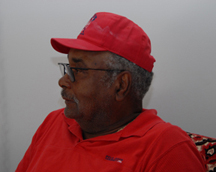 Melvin Ridley, a 1949 Pearl High School graduate |
||||||||||||||||||||||||||||
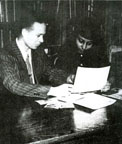 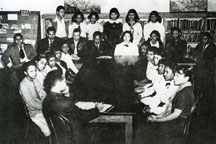 |
|||||||||||||||||||||||||||||
|
|||||||||||||||||||||||||||||
“Pearl was a very outstanding school in that it gave time to prepare students for later living, for college living, and for living after college. A high percentage of our students when on to college. We showed the students how to live in a democracy and how to live for life.” |
|||||||||||||||||||||||||||||
Endnotes: |
|||||||||||||||||||||||||||||

an institutional member of the International Coalition of Sites of Conscience
Museumofed@gmail.com

